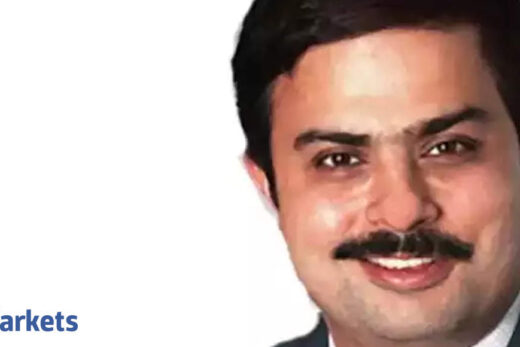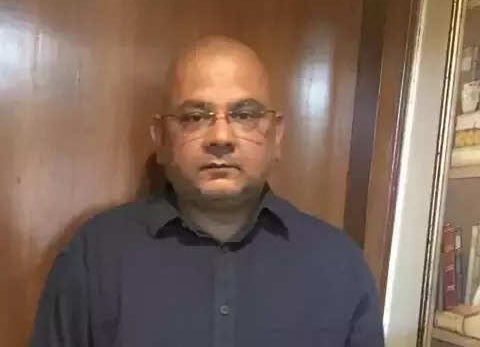What would you say has been your biggest learning and what is it that you feel that you could have done differently as an investor?
If I had the benefit of hindsight, I would have loved to sell everything on January 17 and buy everything on March 27, 2020. But that is the wisdom of hindsight. I do not think I would have done anything differently from what I did in 2020. Despite the Covid-19 uncertainty we requested our investors to follow a disciplined asset allocation. We did not try to time the market, we bought quality stocks and stayed invested through the “mother of bear market” as well as “mother of bull market”.
What do you think the construct of the market would be at the same time next year?
Undoubtedly markets are going through a wall of worry. There are rising active cases in India, especially in Maharashtra and Mumbai. Secondly, inflation fear is coming back; and thirdly, there is worry that rising interest rates can derail the equity market. My feeling is that one year down the line, we would have conquered all these worries, active cases would have come down courtesy vaccination. Inflation will be subdued after remaining high for a while because of rising commodity prices. Today we are already seeing oil cooling off and so inflation will remain range-bound. Interest rates will rise but it will not rise to an extent that will derail the economic recovery.
What today the market has factored in and which will be proven in the days to come will be rising corporate profitability. Corporate India has cut costs. Falling interest rates along with cost cuts have expanded their margin and that rising profitability will continue to pull markets up. The kind of returns we saw between March 2020 and March 2021 would not be visible between March 2021 and March 2022 because in March 2020, we were coming from a cheap market while March ‘21 is a fairly valued market.
There has been a lot of talk with regards to diversification of portfolio. Is it an optimistic view that there are many opportunities in the market right now?
There is an adage which says that do not put all your eggs in one basket. There is benefit in diversification as it optimises risk. Our approach to investment has been more diversified in nature. We believe there is still uncertainty in the market and economy and the more diversified you remain, the more you will have the ability to absorb volatility. If one of your calls goes right, you can take some profit out and if one of your calls does not work out in the near term, you can average yourself. In a concentrated portfolio, you do not have the ability to take profit or average whereas in a diversified portfolio, you are able to do that easily.
There has been a rising interest in IT and FMCG. Is that a move towards defensives or is there merit in that kind of resurgence?
The uncertainty of inflation, rising interest rates and active cases have prompted the market to follow its natural tendency of going towards defensives and IT and FMCG provide that solid defensiveness. More importantly, many of the high valued FMCG companies have not performed in the last three months. So, there is some amount of underperformance over there which is also pushing investors to take shelter in defensive FMCG. Our feeling is this is the cycle which one will have to play out. We remain focussed on growth and we believe the IT sector will continue to do well from a growth point of view. Valuations are also reasonable and IT has the potential to outperform FMCG.
Auto majors are talking about how substantial price hikes are going to be inevitable. How is that likely to impact the overall demand? Where should investors look within the auto space — the two wheelers, tractor majors, four wheelers?
If we break up the auto sector, the tractor market has done extremely well from a volume point of view in 2020 and it continues to remain supported by good monsoon and money moving into the rural economy.
In terms of two-wheelers, there is one company which is more focussed on rural India and the other is more focussed on exports. We believe, right now two-wheelers and the tractor market provide better opportunity within the automobile space. Then comes the passenger vehicle car. Over here, raw material prices have gone up, chip shortages have come in on the supply side and there are many models of cars where the waiting period is extending up to six months.
In this kind of scenario, volumes will be constrained because of chip shortages and raw material price will impact margin unless and until you are able to take a price rise. Clearly the auto sector, especially the passenger vehicles will remain a little bit under pressure and maybe a little lower prices compared to the current ones will be a good entry point.
On commercial vehicles, there are some long-term trends; one dedicated freight corridor is coming into play and that is going to alter the way goods are moved today between northern to eastern and western India. Railway freight is far more competitive vis-à-vis road freight so there will be one impact on long term demand of commercial vehicles.
Secondly, there will also be financing availability for commercial vehicles; and thirdly, operators’ unwillingness to invest into commercial vehicles in view of the uncertainty going forward. Put all these things together, our approach will be to remain overweight on the tractor and two-wheeler players, try to average into passenger vehicle players and avoid commercial vehicles for the time being.
What about the valuation picture for the pharmaceutical basket? Would you veer towards more midcap names?
In reality, there are multiple sectors within the pharma sector. One is the local pharmaceutical companies. They produce and distribute locally. The other one is companies which are providing bulk drugs in APIs – the two generic pharma producers. They do not take much risk because whoever gets the approval, will be in a position to provide raw material. The third is the generic pharma producer who takes approvals, takes the risk of US FDA registration and reaps the benefit when they get the approval. Fourth one is the company which wants to become a branded player in the global market. It is a long gestation period but if you are successful, you create a lot of value.
On top of it, you also have diagnostic chains and hospitals. When you look at pharma, there are these six sub-sectors which trade on different parameters. Their levers are different. Today we believe pharma is a pure bottom-up approach. We remain bullish on the diagnostic and pathology sectors. We remain bullish on some of the generic players as well as local players but it is a purely bottom-up story. If you find a good company doing well, managing risks, they have clean factory structure, then probably it is worth investing into these.
Is there merit in tactically positioning yourself for the year ahead? Would you have a larger exposure to large caps because it seems that it is going to be a bit of a volatile ride? Is there merit in doing portfolio alignments or would you say it is still a stock specific market?
There is not much difference in valuation within large, mid and smallcaps vis-à-vis their historical averages. In some sense they are in equilibrium. Obviously in a volatile market, large caps are likely to fluctuate much less compared to the midcaps and smallcaps. But in small and midcap stocks, the entry and exit cost is also very high.
Our recommendation at this point of time is to bear the volatility. You have seen a great return from March 20 lows. Even if you look at it from Jan 20 highs, the return is still reasonably good. You need to bear some volatility because clearly inflation, the active number of cases and interest rates are impacting the market right now. But the underlying trend of profitability is good across all caps. Not exactly like March 2020 but this time maybe somewhere similar to that from a volatility point of view where every correction will be a good opportunity to invest.
If some had to come to you and say that I want to get rich maybe in one year, maybe two years via the SIP route, what would you advise them?
I will tell him to go and read the story of Birbal Ki Khichdi. Birbal’s Khichdi takes time to cook and if you want to become rich in two years through SIP and mutual funds, I do not think that is possible. Wealth is built over a long period of time. The magic of compounding works over a long period of time. In two years, equity is not the right asset class. When you are looking for wealth creation through SIP in equity mutual funds, you have to take a 15-20 year view. There is no shortcut to success.



